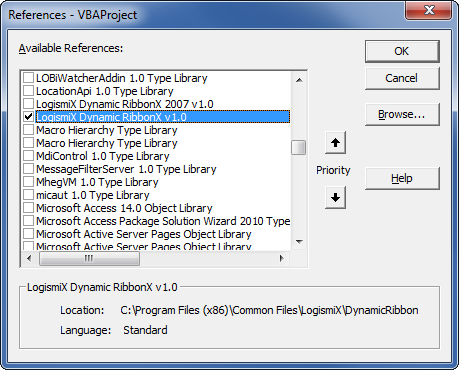Difference between revisions of "Getting started in VBA"
From Ribbon Commander Documentation
(→Writing some code!) |
(→Prerequisites) |
||
| Line 1: | Line 1: | ||
__FORCETOC__ | __FORCETOC__ | ||
== Prerequisites == | == Prerequisites == | ||
| − | + | * Installing the Dynamic RibbonX framework (see [[Installation]]) | |
| + | * [[Referencing the Dynamic RibbonX library in VBA]] | ||
== Referencing the library == | == Referencing the library == | ||
Revision as of 22:47, 14 March 2013
Prerequisites
- Installing the Dynamic RibbonX framework (see Installation)
- Referencing the Dynamic RibbonX library in VBA
Referencing the library
- Create a new project in your favourite office application
- Add a VBA reference to the Dynamic RibbonX library (Tools->References)
- The library is now ready to use. In the immediate window enter
Writing some code!
It is recommended that you go through the examples below in the order in which they appear, as each example builds up on previous ones.

